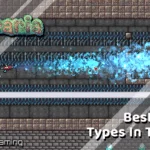Lies of P is available now on PC for owners of the deluxe edition, and it runs quite well on a variety of PCs, especially for an Unreal Engine game. There is barely any stuttering, and the game compiles shaders at launch, which is very useful. It also has DLSS, and FSR 2.0, which are excellent for improved performance. Here are the best graphics settings for Lies of P that you should try to improve your experience.
Lies of P Optimized Graphics Settings (60 FPS+)
Unlike many Unreal Engine titles, Lies of P actually runs quite well on multiple PC configurations right out of the gate. Based on my testing though, there isn’t a lot you can do here to improve your performance by tweaking settings, as most of these don’t impact visuals or performance.
However, with some tweaks, you’ll be able to squeeze out some FPS, and I’ve prioritized performance, as well as visuals with the following settings. I’ll explain the settings below, and if those have any notable impact, but for now, you can simply use the following.
| Graphics Setting | Option |
|---|---|
| Visibility | Best |
| Anti-aliasing Quality | Best |
| Post-processing Quality | Best |
| Shadow Quality | Best |
| Texture Quality | Best |
| Effect Quality | High |
| Vegetation Quality | High |
| Shading Quality | Best |
| Reflection Quality | High |
| Volumetric Fog Quality | High |
| Ambient Occlusion Quality | High |
| Anisotropy Filter Quality | Best |
I highly recommend using DLSS if you have an NVIDIA GPU that supports it and FSR if you’re playing on a higher resolution. I’ve done the testing without DLSS.
I’ve tested the game at 1440p on my RTX 3060 with 12 GB of VRAM, Ryzen 5 5600, and 16 GB of DDR4 RAM. This is basically a budget build, and I chose 1440p because I had no problem running the game maxed out at 1080p.
It goes without saying, that a different GPU/CPU will yield different results, but this guide targets most users struggling to main framerate on their budget builds.
Visibility
The first setting you can adjust is called “Visibility”, and it supposedly increases the range of visible objects, and essentially works like draw distance. It had no impact on performance, and I couldn’t really see any major difference in actual visibility either. You can leave this at Best.
Post-processing Quality
This setting controls the application of different post-processing effects in-game like chromatic aberration, film grain, and such. There is no performance gain based on my testing, and you can set this to Low, or Best depending on your preference.
Shadow Quality
Even though Shadow Quality usually impacts performance quite a bit in most games, I only saw a 2% difference by going from Best to High. I recommend Best here, because the impact is minuscule, and there is a pretty visible difference once going from Best to High, as you can see below.

Texture Quality
I’m lost with this setting because no matter which value I picked, I could barely tell if there was any difference. The following comparison is between Low and Best, and it’s hard to spot any difference at all, especially up close.

This might change if you’re not close, but I recommend using the highest value because the game’s VRAM usage isn’t that high either.
Effect Quality
This setting impacts the quality, and spread of the different effects in-game, whether it’s during combat or interactive ones. There is a small 2.5% increase in average FPS by going from Best to High, so I recommend using High, which doesn’t look too different from Best anyway.
Reflection Quality
Like many other settings, while Reflection quality can impact the quality of reflections in-game, the actual performance gain while going from Best to High isn’t there. I suggest keeping this at High or Best.

Similarly, you can keep Shading Quality, Anisotropic Filter Quality, and Volumetric Fog at Best or High as well.
Vegetation Quality
Another setting that has a significant visual impact, but barely any performance difference is Vegetation quality. The lowest value turns off vegetation entirely, but there isn’t any obvious difference between High and Best. I recommend keeping this at the High value.

Ambient Occlusion Quality
Finally, the one setting that actually has a more than minor impact on performance. Going from Best to High nets you around an increase of 5% higher average FPS. Going from Best to Low improves the average FPS by around 7.2%.

Here I recommend using the High setting because ambient occlusion is pretty essential in adding depth to objects in the game world.
Results
With my optimized settings, you’re looking at a small improvement, but you shouldn’t expect a huge jump. The individual settings, sadly don’t exactly scale well enough to give players a lot of choice.
| Preset | Resolution | Average FPS |
|---|---|---|
| Ultra | 1440p | 76 FPS |
| Optimized Settings | 1440p | 66 FPS |
The major way to significantly improve performance is by using upscaling techniques like DLSS and FSR, or by turning down the resolution.
We hope these best graphics settings for Lies of P were helpful and you’re getting better performance. Let us know if you have any questions in the comments below.










